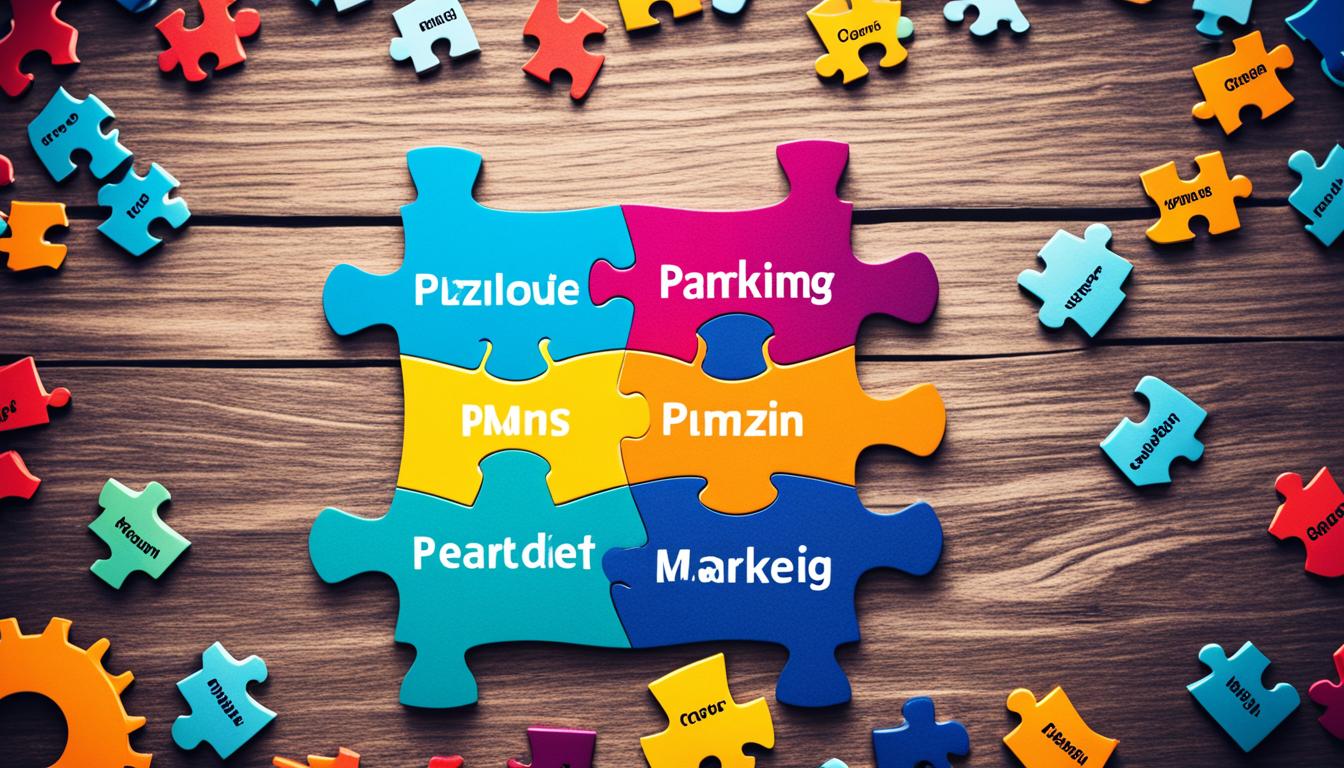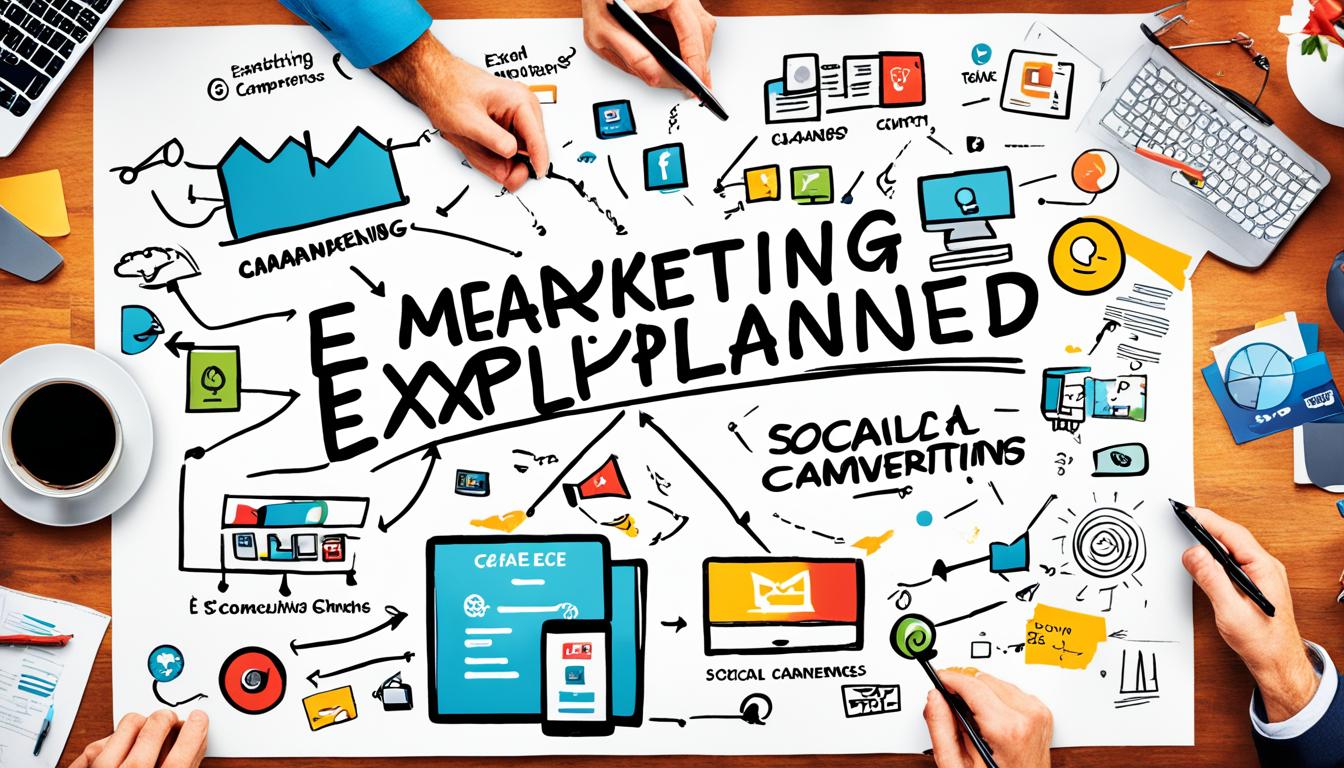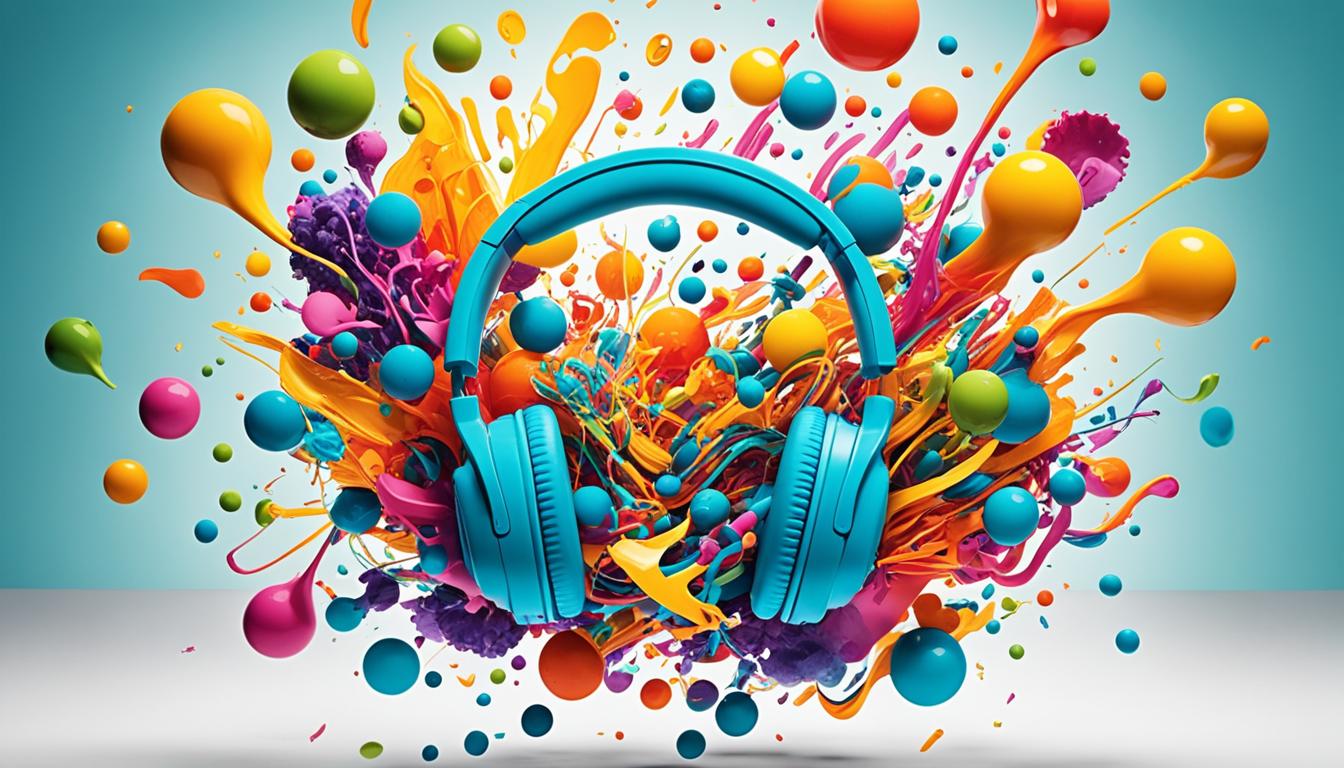Nostalgia marketing is a smart way that uses our feelings to connect us with brands. It reminds us of good times from our past. This helps brands make strong bonds and get loyal customers.
This kind of marketing touches our hearts by making us feel at home and comfortable. It uses old ads and heartfelt messages. This way, brands bring back good feelings and make us love their products or services.
To succeed, marketers must really know who they are talking to. They must understand what memories and experiences matter to their audience. By connecting with what each generation loves, brands create special ads that speak to us directly.
Key Takeaways:
- Nostalgia marketing creates an emotional connection with consumers through memories and experiences from the past.
- It leverages elements such as emotional branding, brand storytelling, and sentimental marketing.
- Nostalgic advertising taps into consumer psychology and the human tendency to remember positive experiences.
- Understanding the target audience’s cultural references and touchpoints is crucial for effective nostalgia marketing.
- Nostalgia marketing can be implemented across different industries and generations to build brand loyalty.
What is Nostalgia Marketing?
Nostalgia marketing uses fond memories to connect with consumers. It links products or brands to past symbols and touchstones. This strategy makes people feel familiar and positive about what they’re buying. It builds a bridge from past to present.
Brands use reboots, remakes, and throwbacks to bring customers back in time. These modern takes on classic ideas mix old emotions with new products. Whether it’s a movie comeback or a retro product design, this marketing sparks joy and comfort.
Nostalgia marketing is unique in today’s fast-paced marketing world. It believes that good memories can drive purchases and loyalty. By tapping into our shared memories, brands build a connection with us.
| Benefits of Nostalgia Marketing | Examples |
|---|---|
| Establishes an emotional bond | Reboots: “Jurassic Park” and “Ghostbusters” |
| Sets a positive and familiar tone | Remakes: Disney’s live-action versions of animated classics |
| Creates a sense of comfort | Throwbacks: Retro-inspired fashion trends |
| Generates a sense of nostalgia | Bringing back discontinued products with a modern twist |
As generations change, so does nostalgia marketing. Brands need to keep up with different cultural symbols and memories. It’s important to know what makes each generation feel nostalgic. This way, brands create meaningful campaigns and lasting relationships.
Why does Nostalgia Marketing work?
Nostalgia marketing works well because it creates a strong emotional hook. It makes consumers feel a sense of familiarity and comfort. This is especially appealing when the world seems uncertain.
By tapping into nostalgia, brands help people escape the future’s uncertainties. They offer a sense of certainty and reliability. This approach allows people to connect over shared memories.
Nostalgia marketing appeals to many because it lets people interpret their own feelings about the past. By using nostalgia, brands create a shared understanding. This strengthens their bond with customers and increases loyalty.
Why is Nostalgia Marketing important?
Nostalgia marketing is a key strategy in the business world today. It uses positive memories to connect with people emotionally. This connection can lead to more loyalty, engagement, and sales for brands.
One big benefit of nostalgia marketing is how it builds brand loyalty. Brands that remind people of good times create a strong emotional link. This link turns customers into loyal supporters, leading to more sales over time.
This type of marketing can also give old brands a new life. By mixing the past with a fresh twist, brands can attract a broader audience. It opens up new opportunities for them to innovate and stand out.
In the entertainment sector, nostalgia marketing is especially powerful. Companies can use beloved pop culture to get people excited. This excitement drives engagement and increases sales by bringing back famous characters and stories with a new angle.
| Benefits of Nostalgia Marketing: |
|---|
| Increased brand loyalty |
| Enhanced customer engagement |
| Higher sales and conversions |
| Revitalization of old brands |
| Appeal to a wider audience with a modern twist |
Nostalgia lets brands create deep connections with people. Whether it’s through reimagined products or bringing back cherished characters, this approach helps. It touches people’s hearts with fond memories. This emotional bond can make a brand stand out and reach more success in the competitive market.
Classic examples of Nostalgia Marketing
Two classic examples of nostalgia marketing are the 1970s Coca-Cola ads and the 1940s De Beers ‘A Diamond is Forever’ campaign. Both used nostalgia to connect emotionally with people. They promoted their products by tapping into warm, fond memories.
In 1971, the Coca-Cola “Hilltop” ad highlighted unity and harmony. It showed young people from various cultures on a lush hilltop, singing together. The song was “I’d Like to Buy the World a Coke.” This ad reminded viewers of a simpler, more inclusive time.
The “A Diamond is Forever” campaign by De Beers started in 1948. It changed how we see diamonds. The ads featured medieval castles and knights, centered around the iconic diamond ring. This imagery brought out feelings of nostalgia and timelessness.
Associating diamonds with enduring love made them symbols of commitment. De Beers showed diamonds as expressions of lasting love. This approach made diamonds a must-have for expressions of love.
These iconic campaigns show how powerful nostalgia marketing can be. It draws on positive memories to make a strong link with customers. This strategy builds trust, encourages loyalty, and boosts engagement.
Modern nostalgia marketing campaign examples
Many brands today use nostalgia marketing to connect with their audience. These campaigns remind us of our favorite movies, brands, and products from before. Here are some standout examples of how this strategy works:
Star Wars and Indiana Jones
The “Star Wars” and “Indiana Jones” series are perfect examples of nostalgia marketing. They bring back fond memories for original fans and draw in new ones. The films keep classic elements, like the Millennium Falcon and Indiana Jones hat, making them exciting for all.
Pepsi
Pepsi uses nostalgia marketing by re-introducing old favorites. A big hit was bringing back Crystal Pepsi, a clear soda from the 90s. This move not only delights fans of the past but also appeals to those who love retro trends.
Nike
Nike has mastered the art of nostalgia marketing. It mixes old-school styles with new products. Campaigns like the “Evolution of the Swoosh” celebrate Nike’s history, taking fans on a trip down memory lane.
Atari
Atari, a video game trailblazer, plans to ride the wave of nostalgia for classic games. It’s rebooting old favorites and launching a throwback console. Atari aims to rekindle childhood gaming memories for many, appealing to lifelong gamers and newcomers.
Throwback Jerseys
Throwback jerseys are big in the sports world. Teams and brands re-release jerseys celebrating the past. Fans wearing these jerseys feel a deep connection to their team’s history and relive great moments.
These examples highlight how nostalgia marketing grabs consumer attention and builds emotional bonds. Brands that tap into our cherished memories can boost engagement, loyalty, and sales.
| Brand | Nostalgia Marketing Example |
|---|---|
| Star Wars | Incorporating new characters and storylines while retaining iconic elements |
| Pepsi | Reviving Crystal Pepsi and capitalizing on nostalgia-driven purchases |
| Nike | Incoporating retro and throwback designs in new products and celebrating the brand’s history |
| Atari | Rebooting retro video games and releasing a retro console |
| Throwback Jerseys | Releasing jerseys that pay tribute to past events, players, and designs |
Understanding Nostalgia
Nostalgia makes us miss the past through smells, songs, or photos of loved ones. It brings out strong feelings and helps shape who we are. Brands use nostalgia to connect with their customers, reminding them of good old days.
Brands create a sense of comfort by tapping into our love for the past. This makes us want to relive those happy memories. Using nostalgia, brands form a deeper bond with us, making us feel connected.
This bond makes us feel warm and cozy towards brands that remind us of happy times. When we feel this connection, we’re more loyal to the brand. Nostalgia marketing uses our precious memories to build lasting relationships with customers.
How Nostalgia Marketing Works
Nostalgia marketing uses special symbols and references that remind us of the past. Brands pick things from the past that we love, creating a genuine connection. This feels authentic and makes us connect emotionally with the brand.
For instance, a fashion brand might bring back ’80s styles. This attracts people who remember the ’80s and younger folks who love old-school styles. By doing this, brands reconnect us with the good times.
Nostalgia Marketing in Action
Here’s a table showing how some brands have successfully used nostalgia marketing:
| Brand | Nostalgia Marketing Strategy |
|---|---|
| Disney | Reviving classic animated films and characters to engage both new and old generations of fans. |
| Nintendo | Releasing reimagined versions of their iconic video games, appealing to longtime fans and introducing new players to beloved franchises. |
| Volkswagen | Bringing back the iconic Volkswagen Beetle with a modern twist, capitalizing on its nostalgic appeal while appealing to contemporary consumers. |
| Levi’s | Reintroducing classic denim styles from past decades, tapping into the enduring appeal of vintage fashion. |
These brands use nostalgia to make us feel close and fond of them. By bringing back fond memories, they make us more engaged and loyal.
How are Brands Using Nostalgia Marketing?
Brands are using nostalgia marketing to connect with their customers in a unique way. They bring back familiar ideas, songs, symbols, and products from the past. This creates a strong emotional bond with their audience. By relating to the cultural references their target audience loves, brands strengthen their identity.
One smart way to do this is through music. Brands often use old hits or jingles in their ads. This transports their audience to happy times in the past. It creates a powerful emotional bond.
Movies and TV shows are great for nostalgia too. Brands work together with these media through collaborations or licensing deals. They connect with memorable characters or scenes that their audience loves. This makes consumers feel a strong connection to the brand, boosting loyalty.
Releasing products with a classic look is another strategy. Brands reintroduce items that have a retro vibe. This makes consumers feel nostalgic. It works especially well for those who love vintage styles.
Bringing back beloved characters from the past is also a tactic. When brands link themselves to a cherished TV, movie, or comic book character, it excites audiences. This excitement ties happy memories to the brand and increases loyalty.
In conclusion, brands know that nostalgia marketing is powerful. By using familiar themes from the past, they connect deeply with their customers. Through nostalgia, brands create lasting memories and a strong bond with their audience.
| Nostalgia Marketing Techniques | Examples |
|---|---|
| Integration of nostalgic music | Using classic songs in commercials |
| Leveraging iconic characters | Collaborating with well-known TV show characters |
| Reviving retro designs | Releasing products with vintage aesthetics |
| Association with beloved movies | Partnering with iconic film franchises |
Conclusion
Nostalgia marketing is a powerful way for brands to connect with people. It uses positive memories and familiar things from the past. This approach makes customers feel at home and loyal to the brand. It also boosts sales and customer activity.
This type of marketing works well across different age groups and backgrounds. Brands can use old songs, famous symbols, or lovable characters. They aim to reach specific groups by recalling happy memories. This helps build strong and lasting connections with customers.
With nostalgia marketing, brands can make customers feel like they’re back in good old days. This emotional pull can create a strong bond and trust. Happy memories make customers come back for more.
In a world full of ads, nostalgia marketing helps brands stand out. It builds an emotional link with customers by bringing up positive past memories. This unique approach distinguishes a brand in a crowded market.





